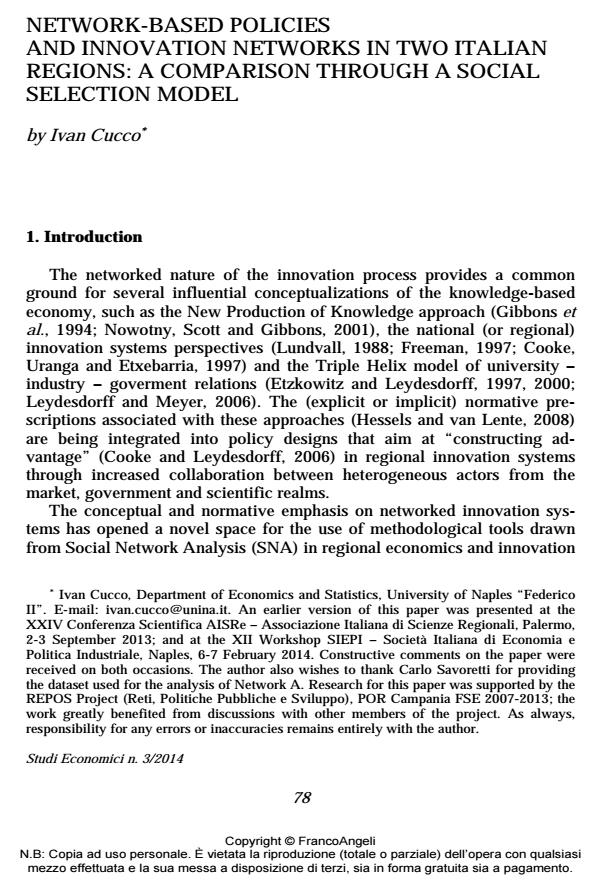Network-based policies and innovation networks in two Italian regions: a comparison through a social selection model
Journal title STUDI ECONOMICI
Author/s Ivan Cucco
Publishing Year 2015 Issue 2014/114
Language English Pages 19 P. 78-96 File size 154 KB
DOI 10.3280/STE2014-114004
DOI is like a bar code for intellectual property: to have more infomation
click here
Below, you can see the article first page
If you want to buy this article in PDF format, you can do it, following the instructions to buy download credits

FrancoAngeli is member of Publishers International Linking Association, Inc (PILA), a not-for-profit association which run the CrossRef service enabling links to and from online scholarly content.
This paper compares the innovation networks generated by two network-based policies (NBPs) implemented in two Italian regions. Social Network Analysis was used to understand whether the networks differ in their local configurations and in the role played by research institutions. To this aim, Exponential Random Graph Models (ERGMs) were estimated on relational data recording joint participation in collaborative R&D projects. Results indicate that the two networks emerge from different local-level processes. In the first case a core-periphery structure arises from degree centralization driven by one focal actor. In the second case, although transitive closure across projects cannot be realized, the overall structure is more balanced. In the first network, however, companies and research organizations show a higher propensity towards joint participation in collaborative projects. Further research is required to understand whether these characteristics can be ascribed to the policy design or to the greater sectoral diversification of the first network.
Keywords: Innovation policies; technological districts; Triple Helix; Social Network Analysis; Exponential Random Graph Models; Social Selection Model
Jel codes: O38, R58
Ivan Cucco, Network-based policies and innovation networks in two Italian regions: a comparison through a social selection model in "STUDI ECONOMICI " 114/2014, pp 78-96, DOI: 10.3280/STE2014-114004